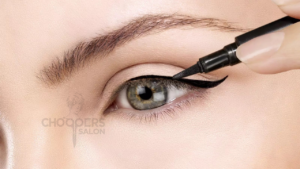Introduction:
The little colored patches of skin that we call moles are frequently thought to be harmless. Beneath their benign exterior, moles may pose a concern since some types of them may indicate the existence of skin cancer. We will examine the association between moles and skin cancer in detail in this in-depth analysis, illuminating the nuances and emphasizing the need of vigilantly monitor these seemingly innocuous growths.
Understanding Moles:
Collisions of melanocytes, the skin cells that produce pigment, are what are referred to as nevi in science. Small, black patches of different sizes, shapes, and colors are how they appear; some are there from birth, while others develop over time. Not every mole is the same, even though the majority of them are benign and do not pose a health risk.
Risk Factors for Skin Cancer:
Some circumstances might increase the likelihood that moles will turn into skin cancer. These include having a fair complexion, a large number of moles dispersed over the body, a family history of skin cancer, and extended exposure to ultraviolet (UV) radiation from the sun or artificial sources like tanning beds. Those who are at risk need to be more vigilant and take preventative steps to keep an eye out for any changes to their moles.
Signs of Skin Cancer:
To aid in identifying potentially malignant moles, dermatologists have devised the ABCDE rule, a mnemonic encompassing key characteristics to watch for. “A” denotes asymmetry, where one half of the mole differs from the other. “B” highlights border irregularity, characterized by jagged, indistinct edges. “C” signifies color variations, such as uneven pigmentation or multiple shades within the mole. “D” underscores diameter, with moles larger than six millimeters warranting scrutiny. Finally, “E” emphasizes evolution, with changes in size, shape, color, or elevation over time serving as red flags.
Types of Skin Cancer:
Skin cancer can arise from various types of cells in the skin, with melanoma, basal cell carcinoma (BCC), and squamous cell carcinoma (SCC) being the primary culprits. Melanoma, though less common than BCC and SCC, is the most aggressive and potentially deadly form, originating from melanocytes within existing moles. BCC and SCC, while typically less invasive, can still cause significant harm if left unchecked, particularly when located on areas of the body frequently exposed to sunlight.
Importance of Regular Skin Checks:
Regular self-examinations of the skin are paramount in detecting changes in moles early, facilitating prompt intervention and potentially life-saving treatment. Conducting monthly skin checks allows individuals to become familiar with their skin’s normal appearance, making it easier to spot any deviations or abnormalities. Moreover, annual skin screenings conducted by dermatologists are highly recommended, especially for those with heightened risk factors for skin cancer.
Prevention Strategies:
Unquestionably, the best protection against skin cancer is prevention. Protective actions can dramatically lower the risk of UV-induced skin damage and the subsequent development of cancer. These actions include applying broad-spectrum sunscreen, finding shade during peak sun hours, donning sun-protective clothes, and refraining from indoor tanning. Moreover, early identification by careful self-monitoring and expert skin exams, together with timely treatment of questionable lesions, are essential for reducing the consequences of skin cancer.
Treatment Options:
When it comes to addressing skin cancer, treatment approaches vary depending on factors such as the type, size, and location of the cancerous lesion, as well as the individual’s overall health and preferences. Options range from surgical procedures like excision and Mohs micrographic surgery to nonsurgical modalities such as cryotherapy, radiation therapy, topical medications, and immunotherapy. The selection of treatment is tailored to each patient’s unique circumstances, with the primary goal being complete eradication of cancer while preserving function and aesthetics.
Conclusion:
In conclusion, while moles are often innocuous features of our skin, they can serve as important indicators of potential skin cancer. By understanding the risk factors associated with moles and remaining vigilant for any signs of change, individuals can take proactive steps to protect their skin health and well-being. Regular self-examinations, annual skin screenings, adherence to sun protection measures, and timely treatment of suspicious lesions are vital components of a comprehensive strategy to reduce the burden of skin cancer and promote long-term skin health.
FAQs (frequently-asked questions)
No, the majority of moles are benign and pose no threat to health.
Risk factors include prolonged UV exposure, family history of skin cancer, fair complexion, and a high number of moles.
Look for asymmetry, irregular borders, color variations, large diameters, and changes over time (ABCDE rule).
Melanoma, basal cell carcinoma (BCC), and squamous cell carcinoma (SCC) are the primary types.
Monthly self-examinations are recommended, along with annual screenings by a dermatologist.
Prevention includes sunscreen use, seeking shade, wearing protective clothing, and avoiding indoor tanning.
Treatment options range from surgery to nonsurgical modalities like radiation therapy and immunotherapy.
Moles can be removed if they are suspicious or atypical, but not all moles need to be removed.
Yes, any changes in size, shape, color, or elevation should be evaluated by a dermatologist.
Yes, skin cancer can develop from other types of skin cells and may not always be associated with moles.




